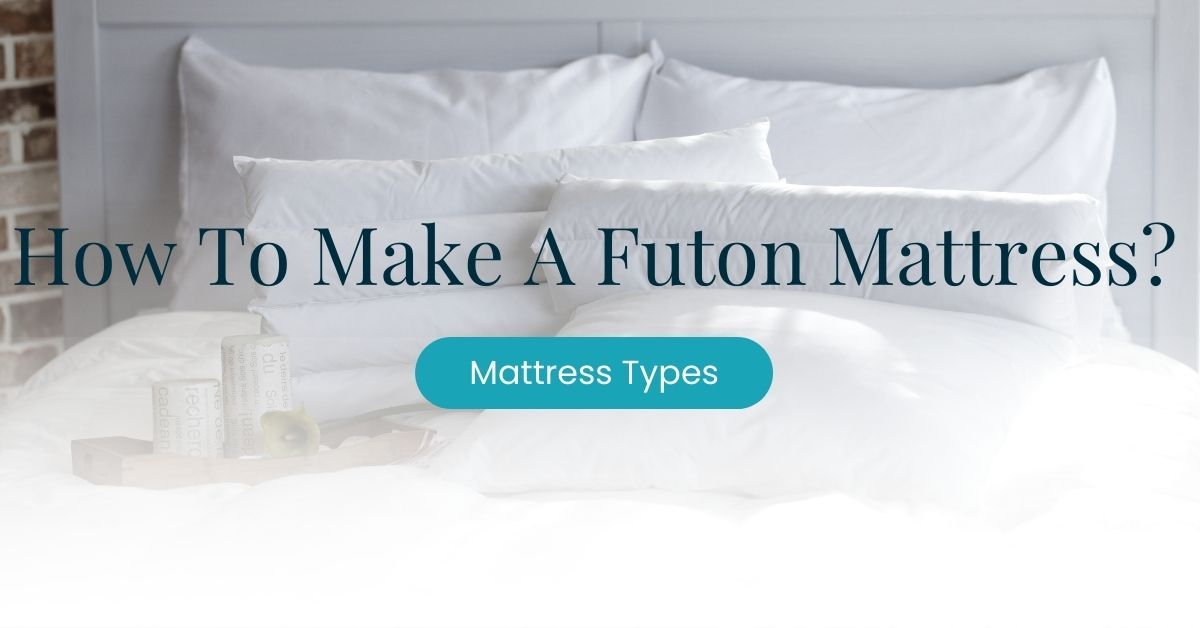Beyond the type of mattress and its usual features, mattresses have sizes and dimensions. When you buy a new mattress, you always know what size it is (single, twin, queen, and so on) since you’re the one who’s choosing the size.
However, some situations require you to accurately measure your mattress. If your mattress was gifted to you and tags are removed, you may need to measure it to know its exact dimensions manually. But how do you do it?
Fortunately, measuring a mattress is an easy task. But first, let’s get to know why you would need to measure your mattress. Read on!
Why Do I Need to Measure My Mattress?
New mattresses show you their size and dimensions in the packaging, but what if you received an old mattress where these information tags are non-existent?
When you don’t have any information tags on your mattress, manually measuring the mattress correctly is needed when buying a new bedding accessory or a new bed frame. If you don’t know the exact width, length, and height of your mattress, you’ll likely purchase ill-fitting accessories and frames.
You’ll also need to measure your mattress if you’re transporting it to a new location. In case you’re getting a moving company to move your mattress for you, they would need the exact size of your mattress so they can get the right tools for the job.
Equipment You’ll Need
You don’t need specialised tools to measure a mattress, so you’ll only need these:
- Tape measure (sewing or construction both works fine)
- Fabric ruler (optional, for faster measurement of mattress thickness)
- A pair of extra hands to help you keep the tape measure in place
Step 1: Remove Bedding & Accessories
The first step is to remove your blanket, pillows, mattress protector, mattress pad, or mattress topper, as they may change the dimensions of your mattress.
And while you’re at it, you can collect all the used bedding and throw them away in the laundry for washing. Dry them afterwards using a dryer or hang them outside to dry.
Step 2: Measure the Width
Once you remove the bedding, you’ll start measuring by starting with the width of the mattress. Take a tape measure or fabric ruler and measure the width of the mattress from edge to edge.
Once you get a size, measure it again at least once or twice to recheck the width. Be careful not to apply too much pressure to the mattress while measuring to avoid deviating from the initial measurement.
Step 3: Measure the Height
The most challenging step is measuring mattress height. For this step, we’d really recommend getting an extra pair of hands to secure the tip of the tape measure to get an accurate measurement.
In measuring the width, you’ve gone from left to right; but when you calculate the mattress’s height (or the length), you’ll want to measure from top to bottom, as pictured above. Once you get a value, recheck for extra precision.
Step 4: Measure the Depth
Mattress depth is most commonly known as mattress thickness. For this step, you can just use a fabric ruler or standard one as they’re easier and more convenient to use.
Get your ruler and push it against the side of the mattress; make sure the zero line perfectly lines up with the top seam of the mattress. Write down the value and recheck for added accuracy.
Note that mattress thickness values only sit within absolute numbers (say 4 inches thick, not 4.3, and so on). However, your measurement might deviate a little because of foam expansion (such as in the cases of foam mattresses in a box).
Tip: If you have a mattress topper and you’re buying a sheet, it helps to include the topper for a better fit.
Standard Mattress Sizes and Dimensions
Mattresses aren’t made with random sizes; there are standard sizes and dimensions to make different branded mattresses uniform in measurement. However, there are also UK and US mattress sizes (same for shoe sizes).
The table below shows the US mattress sizes:
| US Mattress Sizes | Size in Inches (in) | Size in Centimetres (cm) |
|---|---|---|
| Twin | 38 x 75 inches | 96.5 by 190.5 centimetres |
| Twin XL | 38 x 80 inches | 96.5 by 203.2 centimetres |
| Full | 54 x 75 inches | 137.2 by 190.5 centimetres |
| Queen | 60 x 80 inches | 152.4 by 203.2 centimetres |
| King | 76 x 80 inches | 193 by 203.2 centimetres |
| California King | 72 x 84 inches | 182.8 by 213.4 centimetres |
As for the UK mattress sizes, here’s a table for easier understanding:
| UK Mattress Sizes | Size in Centimetres (cm) |
|---|---|
| Small Single | 75 x 190 centimetres |
| Single | 90 x 190 centimetres |
| Small Double | 120 x 190 centimetres |
| Double | 135 x 190 centimetres |
| King | 150 x 200 centimetres |
| Super King | 180 x 200 centimetres |
How Do You Measure a Mattress For Fitted Sheets?
Measuring your mattress to accommodate a fitted sheet is similar to measuring a mattress. In fact, the only difference between the two is that you only need to account for the thickness of your mattress for a fitted sheet.
Using a ruler, choose one of the mattress’s four corners, and measure the distance between the top seam (the comfort layer) and the bottom (the bottom layer). Once you get a value, reevaluate numerous times again.
It’s also helpful to know that you don’t need an exact thickness measurement; in fact, you can go up in thickness a little extra since you’re measuring for fitted sheets that need a good fit.
For example, if your mattress is 8 inches thick, you can get a fitted sheet with pockets rated for a 10-inch mattress and tuck the extra length of the sheet beneath for added security.
What Other Mattress Measurements Should You Consider?
Mattress density is not exactly measurable without the right tools, but it’s one of the considerations of mattress measurement.
Density is vital in foam-based mattresses as foam can expand or be compacted according to environmental conditions. For example, a memory foam mattress expands when it’s warm and compacts when cold.
If you have a foam-based mattress, you’ll need to account for the subtle changes in the mattress’s dimensions and feel to get more precise.
What Size of Fitted Sheet Fits a 12-inch Deep Mattress?
A fitted sheet with 12-inch deep pockets should fit a 12-inch thick mattress just fine. But as we mentioned, you can go up in size a little since pockets may be strained and torn from continuous use.
If you have a 12-inch thick mattress, you can go for 13-inch or 14-inch sheet pocket depths. If there’s an extra fabric dangling around, don’t worry, you can just tug it underneath your bed—making the sheet more secure in the process.
What Mattress Size is 60 inches by 72 inches?
A 60 inches by 72 inches mattress size is close to the Queen size in the US mattress size chart. Some manufacturers produce smaller Queen sizes, as standard ones come in 60 x 78 inches configurations.
This particular mattress dimension is also close to King in the UK mattress size chart. Take note that some manufacturers deviate a little from standard mattress sizes, so some dimensions might not accommodate a specific size name.
What Size of Bed is 60×75 inches?
It’s most likely a Queen size in the US mattress size chart and a King size in the UK. As mentioned above, there are a few size differences between different manufacturers which may not fit a particular size category.
What Mattress Size is 200 cm?
A mattress size that’s 200 centimetres long can be categorised as Twin XL, Queen, or King in US mattress sizes. For UK mattress sizes, a mattress that long can either be a King or Super King size.
What Size is a 4 by 6 Bed?
A four-by-six bed is commonly known as the standard double size in the UK mattress size chart. This bed measures 135 centimetres wide and 190 centimetres long. The close size category in the US mattress size chart is the full size.
Is 60 Inches a Queen Mattress?
Yes, a 60-inch mattress is queen size for the US mattress size chart, as most queen-sized mattresses have 60 inches of width. However, a width of 60 inches closely qualifies it as King size in the UK chart.





